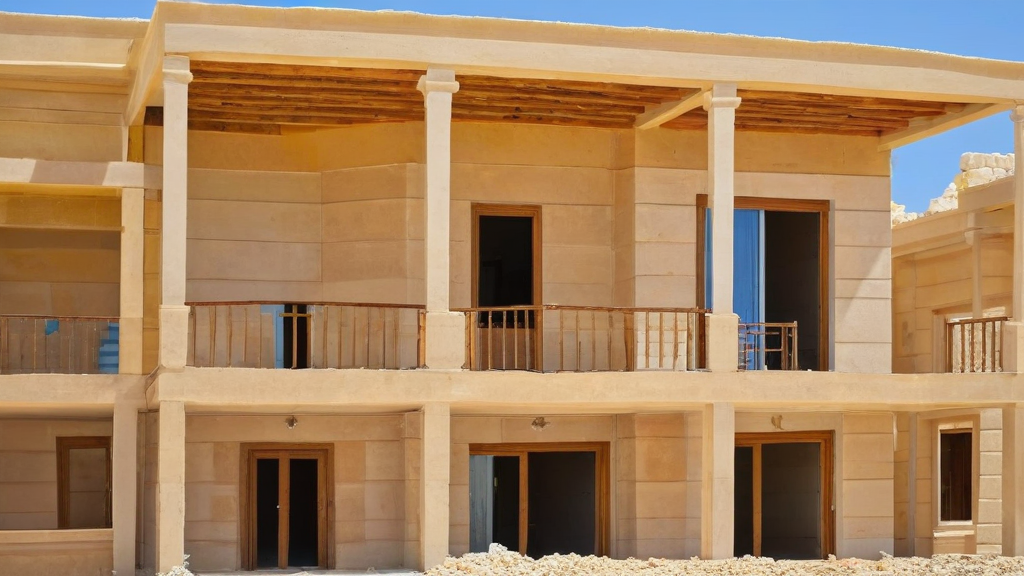Summary about owning and buying property in Hurghada, Egypt.
- To make the most of these opportunities, following effective strategies ensures buyers feel confident and informed, even from a distance.
- Preparing the property properly before a virtual tour creates a positive impression and helps highlight the property’s strengths.
- Using a stabilizer or tripod to keep video steady makes the viewing more professional and easier to watch.
- Adjust your verbal explanations and marketing materials accordingly to address these points, making the virtual tour an informative and personalized experience for international prospects.
- Offering a second viewing or one-on-one meetings to discuss financing options, local regulations, or closing processes can further nurture trust and interest.
Best practices for organising virtual viewings and video tours for buyers abroad
Connecting buyers abroad with properties through virtual viewings and video tours has transformed the real estate market. When people cannot easily travel, offering engaging, transparent, and well-organized virtual tours is essential to attract international interest and build trust. To make the most of these opportunities, following effective strategies ensures buyers feel confident and informed, even from a distance.
Choose the right technology for seamless viewing experiences
Using reliable and user-friendly technology is the backbone of virtual property tours. Choose platforms that offer high-quality video streaming and simple interfaces to avoid technical difficulties that might frustrate buyers. Popular options include video conferencing tools like Zoom or Microsoft Teams, as well as dedicated real estate platforms with integrated virtual tour features. Consider these factors:
- Video quality and resolution – crisp images help buyers assess property details better.
- Possibility to record tours – enables buyers to revisit the walkthrough anytime.
- Interactive features – chat, Q&A sessions, or live annotation to answer questions instantly.
- Compatibility across devices – mobile, tablet, and desktop access ensures convenience.
Preparation and presentation are key to engaging virtual viewings
Preparing the property properly before a virtual tour creates a positive impression and helps highlight the property’s strengths. Here are some best practices:
- Proper lighting: Bright, natural light showcases rooms better and avoids shadows.
- Declutter and stage: A clean, well-arranged space lets buyers imagine themselves living there.
- Highlight important features: Focus on unique elements like views, finishes, or new appliances.
- Plan the route: Structure the tour logically, starting from entry points and flowing through living spaces, bedrooms, and outdoor areas.
Using a stabilizer or tripod to keep video steady makes the viewing more professional and easier to watch. If possible, engage a professional videographer familiar with property tours.
Structured communication builds buyer confidence
In virtual home-buying, clear and ongoing communication is vital. Before the viewing, share all relevant property documentation such as floor plans, inspection reports, and energy certificates. During the tour, narrate the features and answer buyer queries transparently. Some tips to enhance communication include:
- Schedule live sessions at convenient times considering multiple time zones.
- Offer multiple viewing options, such as live guided tours and pre-recorded videos.
- Encourage buyers to prepare questions in advance to keep the session interactive.
- Follow up promptly with additional photos, measurements, or virtual staging previews.
Ensure safety and privacy during virtual tours
Buyer and seller privacy must remain a priority. Inform sellers about the virtual tour schedule and obtain consent for recordings. Avoid sharing sensitive information during live streams, such as personal items or security details. If using pre-recorded videos, control distribution by hosting them on secure platforms or behind password protection. Protecting privacy builds trust and maintains professionalism.
Leverage virtual staging and 3d technology
Innovations like virtual staging and 3D walkthroughs enhance the buyer’s experience. Virtual staging digitally furnishes empty homes, helping buyers visualize potential uses for spaces without the cost of real furniture. Meanwhile, 3D home tours provide interactive navigation, allowing buyers to explore at their own pace. These options are particularly valuable for overseas buyers who want a detailed perspective before deciding to invest in physical visits.
Adapt tours to cultural expectations and local market norms
When dealing with buyers from different countries, understanding cultural preferences and real estate customs may improve engagement. For instance, some buyers may expect detailed information about neighborhood facilities or schools, while others focus more on legal aspects or property history. Adjust your verbal explanations and marketing materials accordingly to address these points, making the virtual tour an informative and personalized experience for international prospects.
Maximise post-tour engagement
After the virtual viewing, keep communication lines open. Follow up with customized emails summarizing the key features showcased, additional resources like virtual brochures, and answers to any buyer questions. Offering a second viewing or one-on-one meetings to discuss financing options, local regulations, or closing processes can further nurture trust and interest.
Encourage feedback to understand buyer concerns or preferences better. Prompt responses show professionalism and dedication, which is especially important in long-distance property transactions.
Organising virtual viewings and video tours for buyers abroad requires thoughtful planning, technological savvy, and clear communication. By using the right tools, preparing the property effectively, and tailoring the experience to international buyers’ needs, sellers can make a strong impression even from thousands of miles away. Investing time in follow-up interactions and safeguarding privacy culminates in smoother transactions and happier buyers ready to make informed decisions securely and confidently.
Overcoming challenges in remote property viewing: tools and techniques for global buyers
Embracing technology to bridge the distance
Buying property from afar poses significant hurdles, especially when in-person visits aren’t possible. Fortunately, the digital age offers powerful tools to bring properties right to your screen, allowing you to explore homes thoroughly despite the miles. Leveraging technology effectively can help you overcome the uncertainty and anxiety that often accompanies remote property viewing.
High-quality video tours and live streams
One of the most practical methods to get a genuine feel for a property remotely is through high-quality video tours. These tours range from pre-recorded walkthroughs hosted by agents to live video streams where you can ask questions in real time. Requesting a live session gives you the advantage to control the pace and focus on specific areas of the property, just as you would during a physical visit.
When arranging these tours, insist on using a steady camera setup to avoid shaky footage that makes it harder to assess the property’s details. Request clear visuals of every room, outdoor spaces, and unique features like built-in appliances, storage areas, or any potential problem spots such as cracks or dampness. This attention to detail can save you from unpleasant surprises later.
360-degree virtual reality experiences
For a more immersive experience, 360-degree VR tours allow you to navigate through the property at your own pace, examining rooms from multiple angles. These virtual tours often integrate with platforms accessible via smartphones or VR headsets, providing a realistic walkthrough that helps you visualize living within the space.
This technology reduces dependence on scheduled showings, giving you the freedom to revisit the property digitally whenever it suits you. Also, 360-degree tours are efficient for comparing multiple listings side by side, assisting in quicker and more confident decision-making.
Interactive floor plans for better spatial understanding
Understanding the layout of a property is crucial when you cannot be physically present. Interactive floor plans complement video tours by providing a bird’s-eye view of the property’s structure, including room dimensions and flow between spaces. This information helps you gauge how your furniture and lifestyle will fit into the home’s design.
Many real estate platforms now offer floor plans integrated with clickable hotspots. Selecting these spots can bring up photos or videos of specific rooms, combining spatial data with visual cues to enhance your remote viewing experience.
Effective communication with real estate professionals
Strong communication is vital when navigating international property markets. Building a good rapport with your real estate agent or contact can make remote viewings more informative and trustworthy. Ensure you choose agents who specialize in virtual tours and have a proven track record working with overseas buyers.
Don’t hesitate to ask detailed questions about aspects not covered in the video, such as neighbourhood safety, local amenities, or future developments. Agents who proactively provide updates and additional resources will make you feel connected and informed despite the distance.
Utilizing digital documentation and remote legal services
Once you decide to move forward with a property, completing paperwork remotely can be a challenge. Many regions now support electronic signatures and digital document exchanges, simplifying the process. Familiarize yourself with these tools early so you can complete contracts securely and efficiently from anywhere in the world.
Additionally, local legal advice can be obtained remotely through video calls with property lawyers or notaries. This ensures you understand important legalities, taxes, and obligations before committing to a purchase.
Time zone and scheduling considerations
Coordinating virtual viewings across time zones requires careful planning. You want to ensure that the property is presented in the best natural lighting, which may mean early mornings or late evenings depending on your location. Work with your agents to find convenient times that accommodate both parties and make the most of daylight hours for clearer visuals.
Mitigating risks with third-party inspections and local contacts
While technology offers excellent visual insights, certain property details can only be confirmed on site. Employing local inspectors or trusted contacts to conduct physical assessments or verify property conditions adds an extra layer of security. These professionals can provide objective reports, photographs, and feedback that supplement your virtual tours.
Such on-the-ground support is invaluable particularly for international buyers unfamiliar with local building standards or neighborhoods.
Practical tips for buyers abroad
- Prepare a checklist: Outline key features and concerns before any virtual tour to stay focused during viewing sessions.
- Request multiple viewing formats: Combine live video, 360 tours, and floor plans for comprehensive property understanding.
- Verify high-speed internet access: Ensure both you and the agent have reliable connections to avoid interruptions during live viewings.
- Keep communication clear: Summarize discussions in emails to maintain records and reduce misunderstandings.
- Leverage local expertise: Engage local professionals for inspections, legal advice, and neighborhood insights.
By incorporating these tools and strategies, buyers abroad can confidently explore properties remotely, reducing the uncertainty that can accompany long-distance real estate transactions. With technology at your fingertips and the right support network, finding your ideal home internationally becomes not only possible but efficient and enjoyable.
Organising virtual viewings and video tours for buyers abroad is a vital skill in today’s global property market. By following best practices,such as scheduling convenient times, providing high-quality visuals, and preparing detailed property information,you can create an engaging and transparent experience that reassures buyers from anywhere in the world. These steps help bridge distance and build trust, making it easier for buyers to make confident decisions.
Remote property viewing does come with its challenges, from technical glitches to limited physical presence. However, using the right tools and techniques, like live video calls, 360-degree tours, and interactive floor plans, can overcome these obstacles. Leveraging technology not only enhances clarity but also allows buyers to explore homes on their own schedule, deepening their connection to the property.
Ultimately, the key to success lies in communication and adaptability. By actively addressing questions and customizing the virtual experience according to buyers’ needs, you can turn geographical barriers into opportunities. Whether you’re a real estate agent or a seller, embracing virtual viewings opens doors to a wider audience and helps you grow your business globally,all while providing convenience and peace of mind to buyers abroad. With the right approach, virtual property tours become more than a substitute; they become a powerful way to connect, showcase, and sell real estate across borders.










